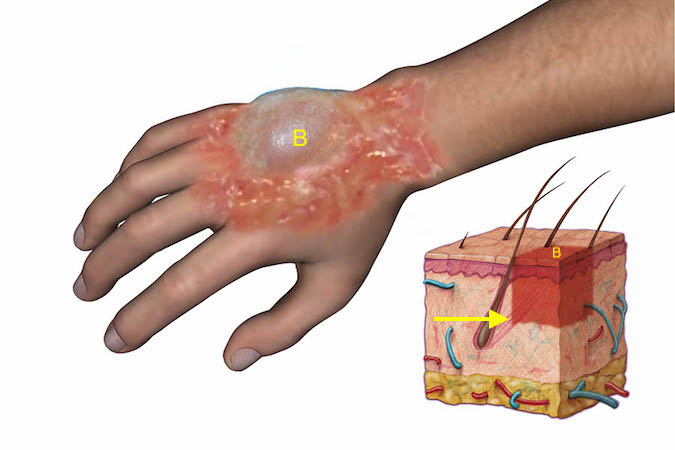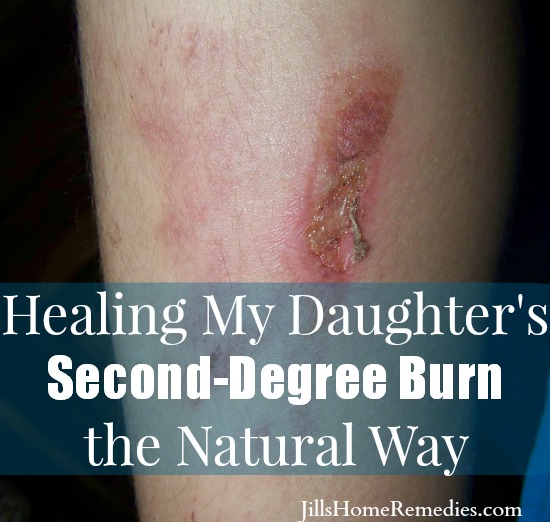

Patients with burns involving less than 20% of their body should do well, but those with burns involving greater than 50% have a significant mortality risk, depending upon a variety of factors, including underlying medical conditions and age. As the percentage of burn surface area increases, the risk of death increases as well. Shock may occur if inadequate fluid is not provided intravenously. If more than 15%-20% of the body is involved in a burn, significant fluid may be lost.
#SECOND DEGREE BURN SKIN#
While first-degree burns are painful, the skin integrity is intact and it is able to do its job with fluid and temperature maintenance. Only second- and third-degree burn areas are added together to measure total body burn area.

Each leg = 18% total (front = 9%, back = 9%)Īs an example, if both legs (18% x 2 = 36%), the groin (1%) and the front chest and abdomen were burned, this would involve 55% of the body.This calculation is based upon the fact that the surface area of the following parts of an adult body each correspond to approximately 9% of total (and the total body area of 100% is achieved): The "rule of nines" is often used, adjusted for infants and children. Burns are measured as a percentage of total body area affected. In addition to the depth of the burn, the total surface area of the burn is significant. Picture of the Rule of Nines - Burns on an Adult Burns that extend deeper may cause permanent injury and scarring and not allow the skin in that area to return to normal function. Only the epidermis has the ability to regenerate itself. A burn is also a break in the skin, and the risk of infection exists both at the site of the injury and potentially throughout the body. Moreover, the skin is the body's first defense against infection by microorganisms. Regardless of the type of burn, inflammation and fluid accumulation in and around the wound occur. Similarly, second-degree burns may evolve into third-degree burns. Think of a sunburn that blisters the next day. Over a few hours a first-degree burn may involve deeper structures and become second degree. Because the nerves and blood vessels are damaged, third-degree burns appear white and leathery and tend to be relatively painless.īurns are not static and may mature. Third-degree burns are deeper still, involving all layers of the skin, in effect killing that area of skin. Second-degree burns are deeper and, in addition to the pain, redness and inflammation, blistering of the skin also occurs.
:max_bytes(150000):strip_icc()/IMG-20130720-173118-178-56a2f5675f9b58b7d0cfdf50.jpg)
The inflammation is characterized by pain, redness, and a mild amount of swelling. Sunburns often are categorized as first-degree burns. Burns are classified based upon their depth.Ī first-degree burn is superficial and causes local inflammation of the skin.


 0 kommentar(er)
0 kommentar(er)
